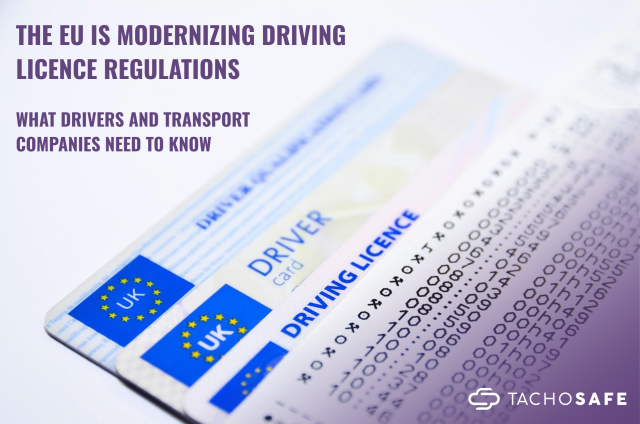The EU is modernizing driving licence regulations – What drivers and transport companies need to know

In March 2025, the European Parliament and the Council of the EU reached a provisional agreement on a major reform of driving licence regulations. This initiative aims to improve road safety and adapt to new technological and social realities.
For drivers, transport companies, and authorities, these changes bring both challenges and opportunities.
Digital driving licences: A step toward the future
One of the most significant changes is the introduction of a digital driving licence, accessible via mobile phones or other digital devices. It will be integrated into the EU Digital Identity Wallet, streamlining administrative processes such as renewal or replacement – especially for those relocating to another EU member state. While the digital format will become the default, drivers will still be able to request a physical version, which may be useful when traveling to third countries that do not recognize digital licences.
Supporting young drivers: Accompanied driving and probation period
To reduce accident risks among young drivers, the new rules introduce an EU-wide accompanied driving system for 17-year-olds. These young drivers will be allowed to drive category B vehicles under the supervision of an experienced driver. EU member states may also extend the program to include 17-year-old truck drivers under specific conditions.
Additionally, all new drivers will face a minimum two-year probation period. During this time, stricter penalties will apply for violations such as driving under the influence or failing to wear a seatbelt.
Medical assessments and age-related requirements
The updated directive includes systematic checks on drivers’ physical and mental fitness. When issuing or renewing a licence, drivers will either self-assess their health condition or follow other national procedures. While the EU does not impose mandatory medical exams, member states can choose to implement them – particularly for drivers over the age of 65.
Protecting vulnerable road users
To enhance the safety of pedestrians, cyclists, and e-scooter users, drivers will be required to demonstrate awareness of risks related to these road users during both theoretical and practical driving tests. Training will also cover the dangers of phone use while driving, blind spots, and driving in difficult weather conditions.
Flexibility for alternative fuel vehicles
To support the shift to low-emission mobility, category B licence holders will be permitted to drive alternatively fueled vehicles – such as electric vans – with a maximum weight of up to 4.25 tonnes (compared to the current 3.5-tonne limit). This acknowledges the added weight of batteries and related components in such vehicles.
Recognition of third-country licences and EU-wide harmonization
Licences exchanged from third-country equivalents will be recognized across the EU, provided the country of origin has comparable road safety standards. The European Commission and member states will jointly determine which countries qualify for this recognition.
Implementation timeline
Once formally adopted, the new regulations will take effect 20 days after publication in the EU Official Journal. Member states will then have four years to transpose the directive into national law.
Implications for transport companies
For transport companies, these changes bring new responsibilities and opportunities. The introduction of digital licences will simplify document management, and lowering the minimum age for truck licences (from 21 to 18) could help mitigate driver shortages. However, companies must ensure that drivers comply with the new health and safety requirements.
The modernization of driving licence rules reflects the EU’s commitment to improving road safety while aligning legislation with technological and societal progress. For drivers and companies alike, it is crucial to stay informed and prepare for the upcoming changes to ensure compliance and take advantage of the benefits they bring.
When it comes to managing tachograph data in compliance with EU regulations, TachoSafe is your partner for both trusted hardware and software!